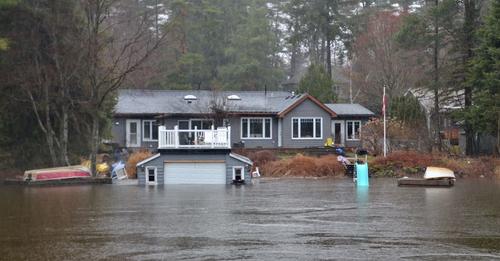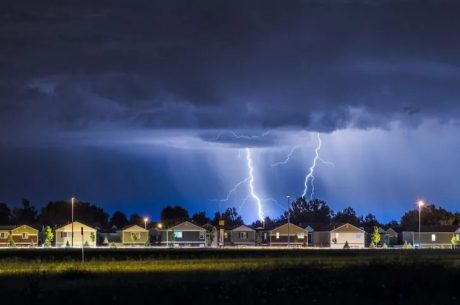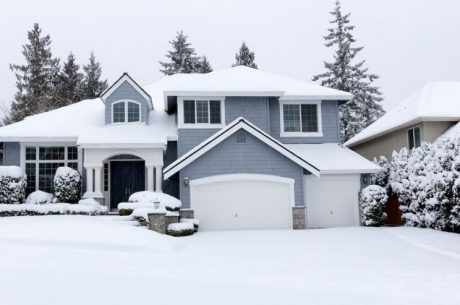Spring on Long Island brings warmer weather, blooming flowers, and unfortunately, the potential for flooding. With heavy rains and melting snow, many homeowners find themselves facing water damage risks. Flooding can cause significant damage to homes, leading to costly repairs and long-term issues like mold growth. At PuroClean of Huntington, we specialize in water damage restoration and want to help you protect your home before disaster strikes.
Why is Long Island Prone to Flooding?
Long Island’s coastal location and low-lying areas make it particularly vulnerable to flooding. Heavy rainfall during spring storms can overwhelm drainage systems, while snowmelt from colder months increases water levels in already saturated soils. Poor drainage around homes, coupled with rising sea levels and storm surges, further contributes to flooding risks. Without proper preparation, water can seep into basements, weaken foundations, and create an environment where mold thrives.
In recent years, climate change has intensified the frequency and severity of extreme weather events. According to climate studies, rising ocean temperatures contribute to heavier rainfall and stronger storms, making flood preparedness even more crucial for homeowners on Long Island.

How to Prevent Flooding in Your Home
Maintain Your Drainage Systems
A well-maintained drainage system is one of the most effective ways to prevent water intrusion.
- Gutters and downspouts should be clear of debris to ensure that water is directed away from the foundation.
- A well-maintained sump pump provides an added layer of defense, particularly for homes with basements.
- Regularly checking that it is functional and installing a battery backup can prevent water accumulation during power outages.
- Consider installing a backwater valve to prevent sewer backups, which can cause additional damage during flooding events.
Ensure Structural Integrity
Beyond drainage, the structural integrity of your home plays a key role in flood prevention. Small cracks in the foundation may seem harmless, but they can allow water to seep in, leading to significant damage over time.
- Sealing these cracks and applying waterproof coatings to basement walls can greatly reduce the risk of interior water intrusion.
- Elevating important utilities such as electrical panels and water heaters above potential flood levels can minimize costly damages.
- Installing flood barriers or sandbags in high-risk areas can help prevent water from entering your home.
Optimize Your Landscaping
The way your property is landscaped also influences flood risks.
- Yards should be graded so that water naturally drains away from the home rather than pooling near the foundation.
- Installing French drains or rain gardens can further assist with water diversion.
- Native plants with deep roots help absorb excess moisture, reducing runoff and improving the soil’s ability to manage heavy rains.
- Permeable paving materials for driveways and walkways can allow water to filter into the ground rather than accumulating on the surface.
Review Your Insurance Coverage
Insurance is another critical aspect of flood preparedness. Many homeowners assume their standard policies cover flood damage, only to realize too late that they do not.
- Checking FEMA flood maps to understand your property’s risk and securing a separate flood insurance policy can prevent unexpected financial burdens.
- Being properly insured means you can recover more quickly in the event of a flood.
- Review your policy details annually to ensure you have adequate coverage for any new home improvements or increased risks in your area.

What to Do if Flooding Occurs
Despite taking every precaution, flooding can still occur. In such cases, acting quickly is essential.
- Shutting off electricity in affected areas prevents electrical hazards.
- Removing standing water and beginning the drying process immediately can help mitigate further damage.
- Using fans and dehumidifiers can accelerate drying and reduce the risk of mold growth.
- For extensive flooding, professional water damage restoration services are often necessary to ensure complete and safe cleanup.
- Keep important documents in waterproof containers and have an emergency preparedness kit ready with essentials like flashlights, batteries, and non-perishable food.
At PuroClean of Huntington, we understand the urgency and stress that come with water damage. Our team is equipped with the latest tools and expertise to restore your home efficiently and effectively. If your home is affected by spring flooding, don’t wait—call us today at (631) 402-9700 for professional water damage restoration services.
By taking proactive measures and knowing who to turn to in an emergency, you can safeguard your home against spring flooding and ensure a swift recovery if disaster strikes. Stay safe, Long Island!




 PuroClean of Huntington
PuroClean of Huntington